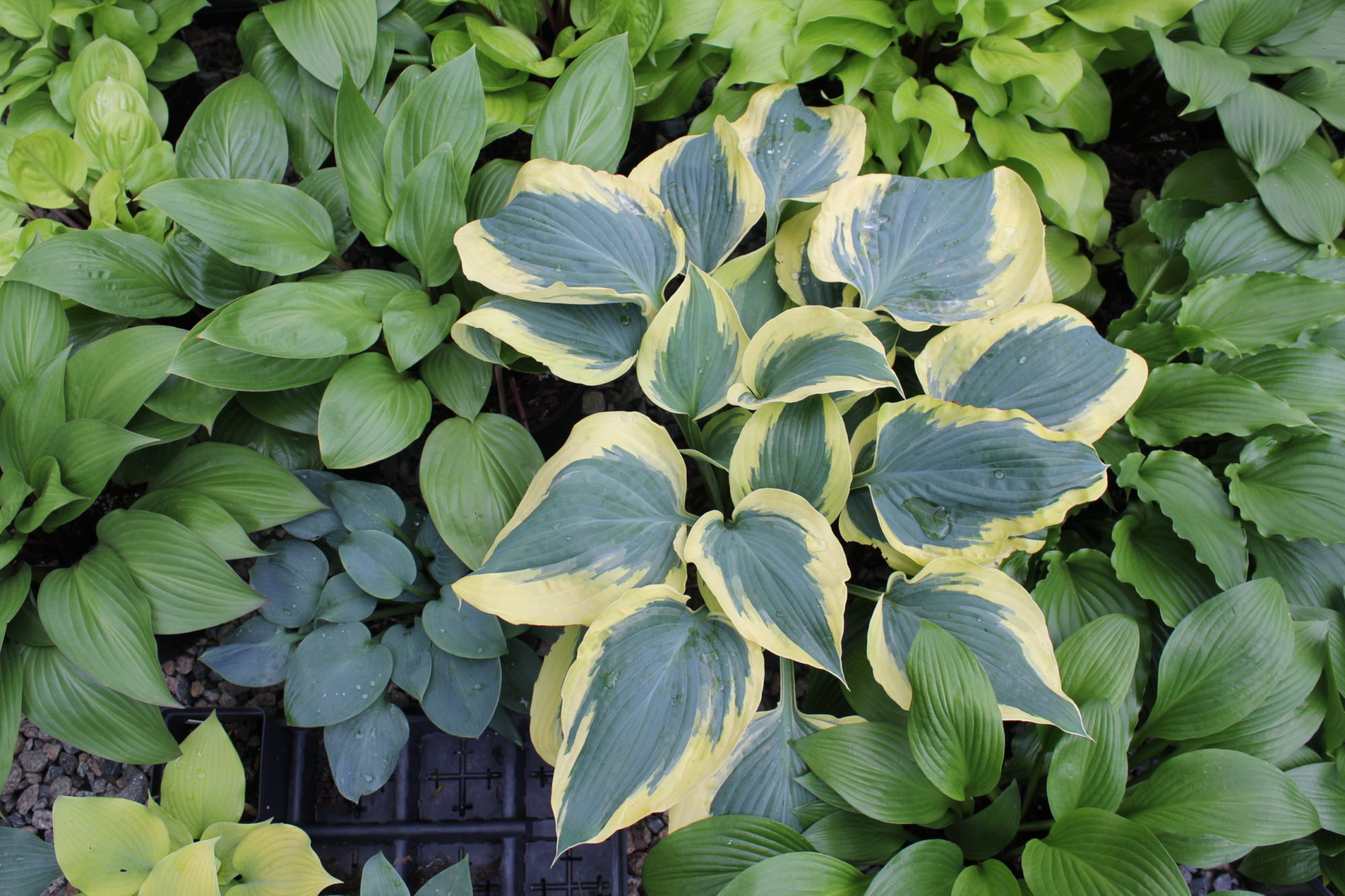Blog 3 Let’s make more tetraploid hostas.
Tetraploid hostas, (those hostas that have doubled their chromosomes), you knew the topic would be visited eventually. At Green Hill Farm we believe that tetraploid hostas may or may not be the future of hostas but until we hybridize a lot of tets we will never know. To this end we have been propagating tetraploid forms of named hostas as we find them and would like to make them available to hosta hybridizers for a nominal cost so that they might have new tetraploid plants to cross.
Converted tetraploid hostas, either by the use of herbicides or “naturally” in Tissue Culture, differ from their “parents” by having thicker leaves, wider margins if variegated, a more compact habit, shorter scapes and a denser arrangement of flowers. All these are positive, (improvements), traits, but they also have shorter roots and a slower growth rate. Some like ‘Mojito’ from ‘Fried Green Tomatoes are more fertile than their parent, but some are not. The flowers are larger as are the fertile parts, pollen, and pods in these tets. There is good and bad in everything.
Here is our first offering to hybridizers. I had a choice to make, when introducing this hosta especially for hybridizing. I could name it and register it, or just introduce it under the name, “tetraploid ‘World Cup’”. I decided on the latter because I believe that hybridizing hostas should be shared and not necessarily marketed. I could have given it some name that was just a group of letters and numbers like some folks do but is that really fun? The name is self-explanatory but not a fancy name for the general public. Actually, I am not sure this plant is a good garden plant, but it will allow you to bring several traits, including gold color, extreme cupping and upright habit into your tetraploid hybridizing program.

So how do you get one? I have several plants of tetraploid ‘World Cup’ that I actually tissue cultured for just this purpose. See, we are having fun now. I think they are blooming size but if not this year next year for sure. All you have to do is contact me through our Order Form on our HostaHosta.com website and I will send you one. I will only charge you $20 for shipping. You will get two plants and you can start to work your magic.
This offer is open to everyone in the United States, we can maybe make other arrangements if you live elsewhere, but please do not name this plant. It is a legitimate hosta with an illegitimate name. Feel free to pass it along in a few years when it finally increases. Tetraploids are slow! Have fun with this… that will make me smile.


